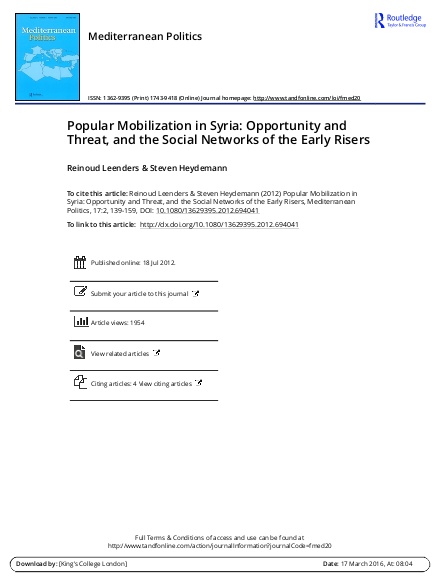
This paper explores the dynamics and underlying conditions of the first few months of the uprising in Syria, from mid-March 2011 until the summer of that year. Together with the contributions from Dalmasso and Kandil, it exploits the opportunity created by the Arab uprisings to shed new light on patterns of social mobilization and collective action that research programmes focusing on authoritarian resilience had tended to overlook. Specifically, it presents an analysis that critically and loosely borrows from, communicates with and hopes to make a modest contribution to social movement theory (SMT). While threat and opportunity are necessary elements for popular mobilization, they are not sufficient. Both ‘threat’ and ‘opportunity’ therefore need to be contextualized within the specific social and political environment, real or perceived, of the ‘early risers’ in Syria, in order to appreciate their local significance. The article further argues that protestors, when under threat and faced with the opportunity, collectively rose up by capitalizing on their dense social networks. Strong clan-based or tribal social structures, circular labour migration, cross-border linkages and proliferating practices denoted as ‘criminal’ variably played a key role in cementing these social networks. It is also contended that these networks' ability easily to dissolve into one another due to their high degree of interconnectedness was instrumental in collective mobilization and their ability to pose a strong and enduring challenge to the regime.